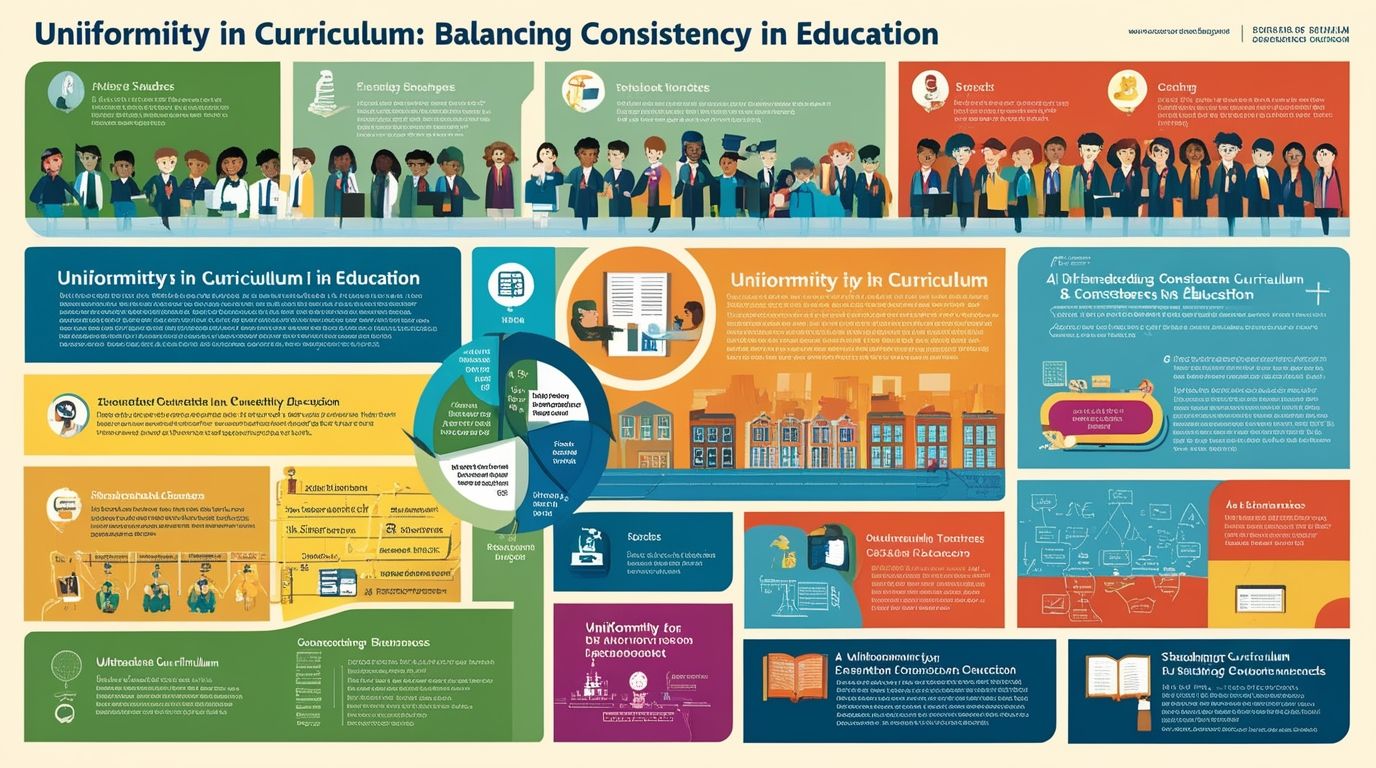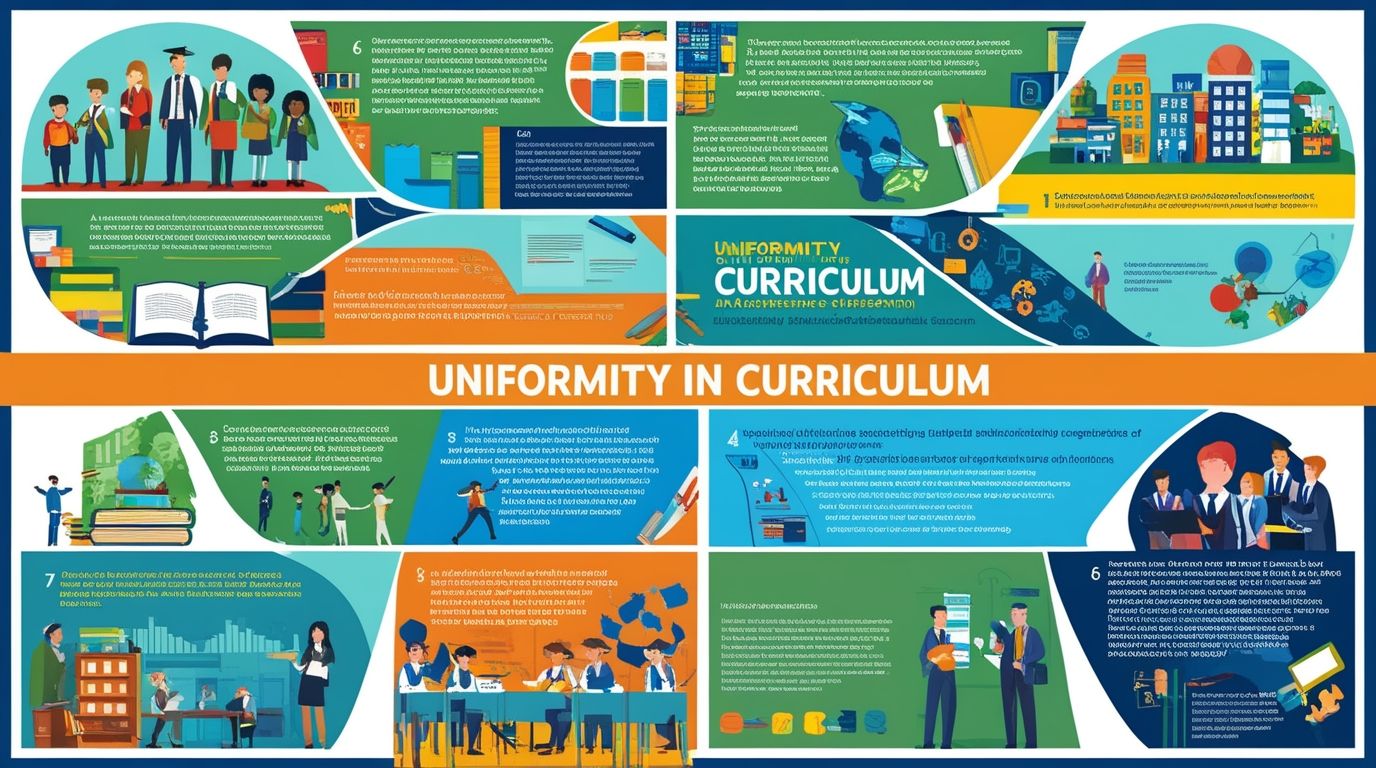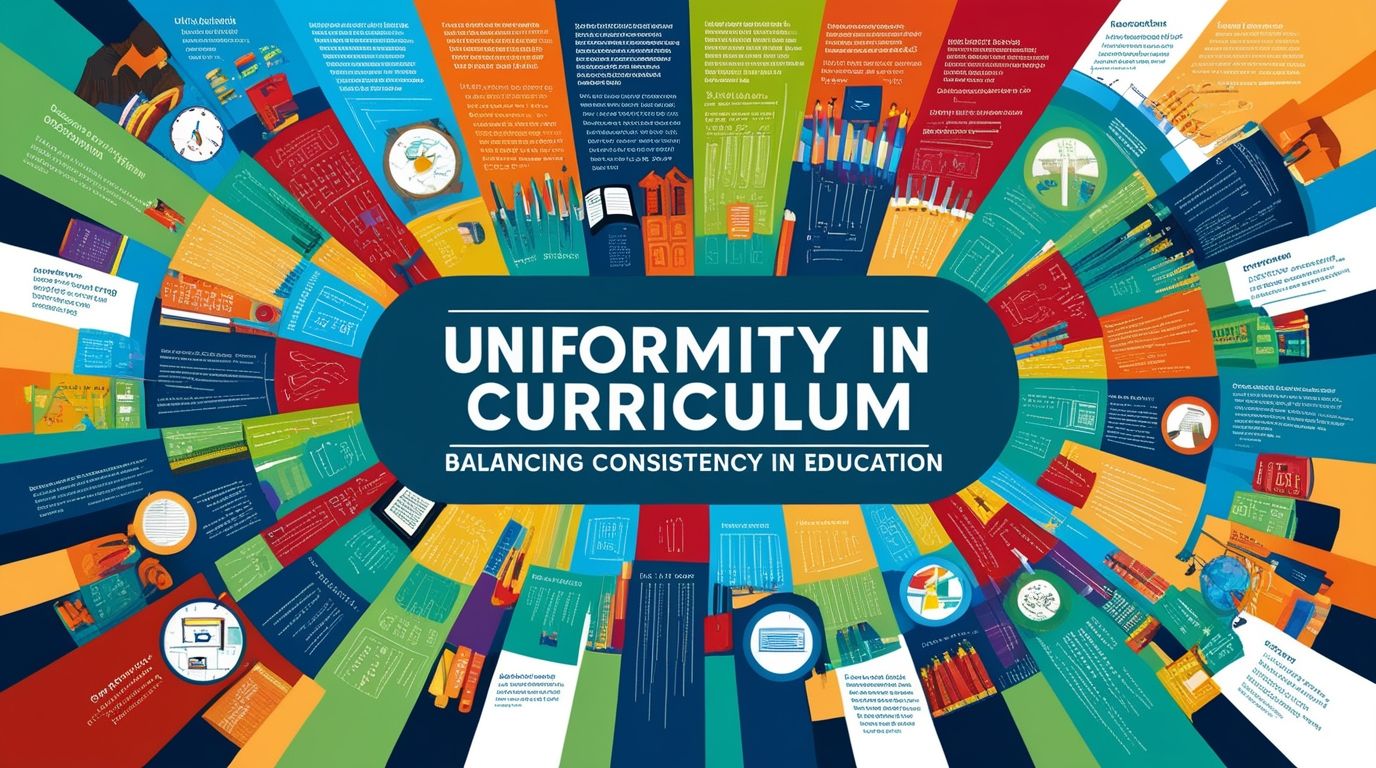Uniformity in Curriculum Balancing Consistency in Education or Curriculum design a critical aspect of educational systems worldwide, serving as the foundation for what is taught in schools and how it is delivered. Uniformity in curriculum refers to the standardization of educational content and instructional practices across schools, districts, or even entire countries. This approach aims to ensure that all students receive a consistent and equitable education, regardless of their location or socioeconomic background. However, the debate over uniformity in curriculum is complex, as it raises questions about the balance between consistency and flexibility, the role of local contexts, and the impact on student learning outcomes. This article explores the concept of uniformity in curriculum, its benefits, challenges, and implications for modern education.
Understanding Uniformity in Curriculum
Uniformity in curriculum involves the standardization of what taught, how it taught, and how student performance assessed. This standardization can occur at various levels, from national to regional to local, depending on the educational system. The goal is to provide a coherent and consistent educational experience for all students, ensuring that they acquire the same core knowledge and skills.
Key elements of a uniform curriculum typically include:
- Standardized Content: A uniform curriculum outlines specific content that all students are expected to learn. This content is often organized into subjects or disciplines, such as mathematics, science, language arts, and social studies, with clearly defined learning objectives and outcomes.
- Consistent Instructional Methods: In addition to standardized content, a uniform curriculum may also prescribe certain instructional methods or pedagogical approaches that teachers are expected to use. This can include guidelines on lesson planning, classroom activities, and the use of educational resources.
- Common Assessments: Uniformity in curriculum often extends to the assessment of student learning. Common assessments, such as standardized tests or exams, used to evaluate whether students have met the prescribed learning objectives. These assessments provide a way to measure and compare student performance across different schools and regions.
- Equity and Access: One of the primary motivations behind uniformity in curriculum is the promotion of educational equity. By ensuring that all students have access to the same educational content and opportunities, policymakers aim to reduce disparities in educational outcomes based on factors such as geography, socioeconomic status, and ethnicity.

Benefits of Uniformity in Curriculum
The uniformity of curriculum offers several potential benefits that can contribute to the overall quality and effectiveness of education:
- Educational Equity: Uniformity in curriculum helps to level the playing field for all students, regardless of their background or where they attend school. By providing the same content and learning opportunities, it reduces the risk of disparities in education that can arise from differences in resources, teacher quality, or local policies.
- Consistency in Learning Outcomes: A uniform curriculum ensures that all students exposed to the same core knowledge and skills, leading to greater consistency in learning outcomes. This consistency particularly important in ensuring that students meet national or regional standards and are prepared for higher education or the workforce.
- Ease of Student Mobility: In systems with a uniform curriculum, students who move from one school to another, either within the same region or across the country, are less likely to experience disruptions in their education. The standardized content ensures that students can transition smoothly without significant gaps or overlaps in their learning.
- Efficient Resource Allocation: Uniformity in curriculum allows for the centralized development and distribution of educational resources, such as textbooks, digital content, and professional development for teachers. This can lead to cost savings and more efficient use of resources, as well as ensuring that all schools have access to high-quality instructional materials.
- Accountability and Benchmarking: Common assessments tied to a uniform curriculum provide a basis for accountability in education. Schools, teachers, and students can evaluated against consistent standards, allowing for meaningful comparisons and benchmarking of performance. This data can inform policy decisions and help identify areas for improvement.
Challenges of Uniformity in Curriculum
While uniformity in curriculum offers several advantages, it also presents significant challenges that educators and policymakers must address:
- Lack of Flexibility: One of the primary criticisms of a uniform curriculum is that it can be overly rigid, leaving little room for adaptation to local contexts or the individual needs of students. Teachers may feel constrained by standardized content and instructional methods, limiting their ability to tailor lessons to the interests, abilities, and cultural backgrounds of their students.
- Stifling Creativity and Innovation: A standardized curriculum can potentially stifle creativity and innovation in both teaching and learning. When teachers are required to adhere strictly to a prescribed curriculum, there less opportunity for them to experiment with new teaching methods, explore interdisciplinary connections, or incorporate emerging topics that may not be covered in the curriculum.
- Cultural and Regional Differences: A uniform curriculum may not adequately reflect the cultural and regional diversity of a country or educational system. Students from different cultural backgrounds may find the standardized content irrelevant or disconnected from their own experiences, leading to disengagement and a lack of motivation to learn.
- Pressure to Teach to the Test: The emphasis on common assessments in a uniform curriculum can lead to a focus on “teaching to the test,” where instruction primarily geared towards preparing students for standardized exams. This approach can narrow the curriculum, reducing the time spent on critical thinking, creativity, and other important skills that are not easily assessed through standardized tests.
- Increased Bureaucracy: Implementing and maintaining a uniform curriculum often requires a high level of bureaucratic oversight and control. This can lead to increased administrative burden for schools and teachers, as well as potential conflicts between local educators and central authorities over curriculum decisions.

Balancing Uniformity and Flexibility
Given the challenges associated with uniformity in curriculum, it is essential to find a balance between standardization and flexibility. Achieving this balance involves several key strategies:
- Differentiated Instruction: While maintaining a uniform curriculum, teachers can employ differentiated instruction to meet the diverse needs of their students. This approach allows teachers to modify the delivery of content, vary instructional strategies, and provide different levels of support based on individual student needs.
- Local Adaptation: Policymakers can design a uniform curriculum that includes a core set of standards and content, while allowing for local adaptation. Schools and teachers can be given the flexibility to modify or supplement the curriculum to reflect local contexts, cultural diversity, and student interests.
- Incorporating Student Voice: Involving students in curriculum design and decision-making can help ensure that the content is relevant and engaging. By incorporating student voice, educators can create a more inclusive and responsive curriculum that resonates with learners.
- Professional Development for Teachers: Providing ongoing professional development for teachers is crucial in a system with a uniform curriculum. Teachers need training and support to effectively implement the curriculum while also being able to adapt their teaching to the needs of their students. Professional development can also encourage innovation and creativity within the framework of a standardized curriculum.
- Formative Assessment: To complement common assessments, educators can use formative assessment practices that provide ongoing feedback to students and inform instructional decisions. Formative assessments allow teachers to monitor student progress, identify learning gaps, and adjust instruction accordingly, without the pressure of high-stakes testing.
The Future of Curriculum Design
As education systems continue to evolve, the debate over uniformity in curriculum will remain a central issue. The future of curriculum design may involve a more nuanced approach that seeks to balance the benefits of standardization with the need for flexibility and responsiveness to local contexts.
Innovations in technology and data analytics offer new opportunities for personalized learning within a uniform curriculum framework. For example, adaptive learning platforms can provide customized content and feedback based on individual student performance, allowing for a more tailored educational experience even within a standardized curriculum.
Moreover, the growing emphasis on global competencies, such as critical thinking, collaboration, and digital literacy, challenges traditional notions of curriculum uniformity. As education becomes increasingly interconnected and globalized, there is a need to rethink curriculum design to prepare students for the complexities of the 21st century.
Conclusion
Uniformity in curriculum plays a vital role in ensuring consistency and equity in education. It provides a standardized framework that helps students achieve common learning outcomes, regardless of their background or location. However, the challenges associated with uniformity, such as the lack of flexibility and the potential stifling of creativity, highlight the need for a balanced approach.
Educators and policymakers must work together to design curricula that are both consistent and adaptable, allowing for local adaptation and differentiated instruction. By embracing a more flexible and student-centered approach, education systems can create learning environments that are inclusive, relevant, and responsive to the needs of all students.
As the educational landscape continues to evolve, finding the right balance between uniformity and flexibility in curriculum design will be key to preparing students for the future while ensuring that no student left behind.

3 thoughts on “Uniformity in Curriculum Balancing Consistency in Education”
Comments are closed.